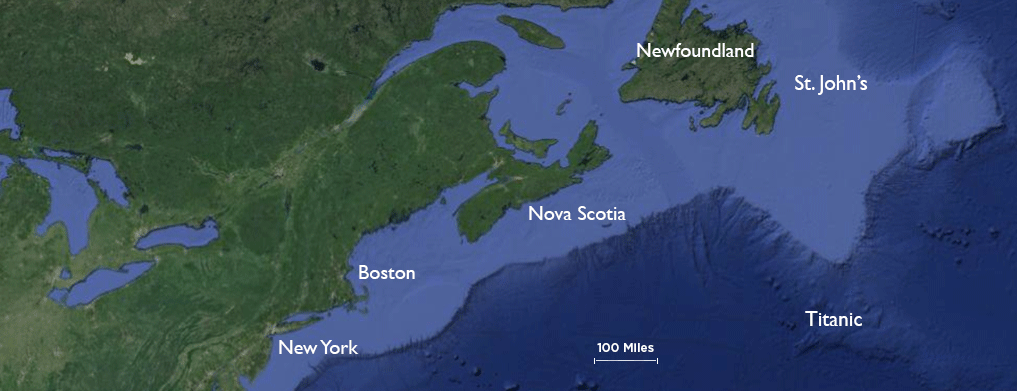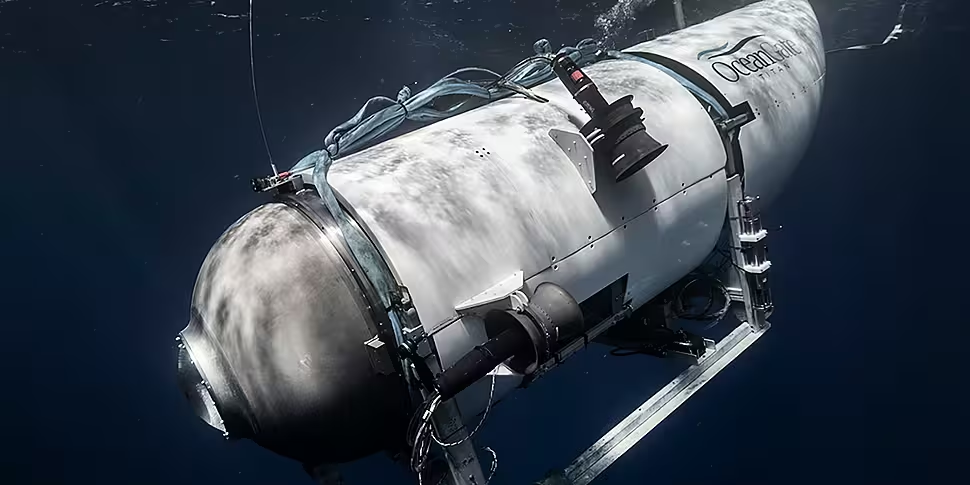Rescuers are facing a race against time to find a missing submersible that lost contact near the wreck of the Titanic as its oxygen supply dwindles.
Five people are on board the submersible craft Titan, which went missing on Sunday in the Atlantic Ocean.
It is understood from the vessel's operator, OceanGate Expeditions, Titan has a 96-hour oxygen supply in case of emergencies - meaning only around two days of "life support" remain.
A major search and rescue operation is taking place, led by the US Coast Guard and involving military aircraft 900 miles east of Cape Cod.
The US Coast Guard warned the search had been "challenging" due to the remote location, some 700 kilometres south of Newfoundland, Canada.
 Map showing the location of the wreck of the Titanic. Source: OceanGate
Map showing the location of the wreck of the Titanic. Source: OceanGateRear Admiral John W Mauger of the US Coast Guard said: "We launched a C-130 aircraft to search to conduct an aerial search, both visual and radar of the scene.
"We've subsequently coordinated with the Canadian Coast Guard and Canadian Armed Forces to deploy additional assets to the scene.
"The Canadians have had a C-130 aircraft searching as well, in addition to also having a P-8 submarine search aircraft deploy as well, and put sonar buoys in the water in attempt to listen."
The Titan lost contact with research vessel Polar Prince about an hour and 45 minutes into the vessel's dive on Sunday morning.
 The submersible Titan departs its launch platform. Picture by: OceanGate
The submersible Titan departs its launch platform. Picture by: OceanGateA British businessman, Hamish Harding, is one of the people on board - along with French submersible pilot Paul-Henry Nargeolet, and chief executive and founder of OceanGate Expeditions Stockton Rush.
Pakistani businessman Shahzada Dawood and his son Suleman were also on board, their family said in a statement.
OceanGate has said it is "exploring and mobilising all options" to bring the crew back safely.
According to OceanGate, the Titan submersible is capable of diving 13,120ft "with a comfortable safety margin" and would take two hours to descend approximately 12,500ft where the Titanic wreck lies.
The vessel operates by pinging back a message every 15 minutes to signal to those ashore that it is safe. It is believed that those pings have stopped.
 British businessman Hamish Harding, who is one of those missing, posted this photo on social media the day before the craft disappeared. Picture by: Facebook/Hamish Harding
British businessman Hamish Harding, who is one of those missing, posted this photo on social media the day before the craft disappeared. Picture by: Facebook/Hamish HardingMarine operations specialist Mike Welham outlined the difficulties in the search operation, adding that "very specialised underwater vehicles" would be needed to go to the depths of the Titanic wreck.
"The biggest problem they've got is the depth of water at the Titanic site," Mr Welham said.
"It's about 3,800m and you need very specialised underwater vehicles to go down to that depth and they're not really readily available.
"So they have a major problem if they have to search and recover this vehicle," he added.
'That's what we hope for'
Ocean researcher at the Stockholm Resilience Centre, Robert Blasiak, said: "The dream scenario right now is that the submersible has managed to reach the surface and it's just drifting at sea level and will be found by one of the passing aircraft in the coming hours.
"That's what we hope for," he said.
"The Coast Guard is also preparing for a more challenging scenario using sonic buoys so they are able to use sonar to detect sound in the water column in case the submersible is at depth. That becomes an entirely different story.
"We have to hope (the submersible) has already reached the surface," he added.
The Titanic famously sank into the Atlantic on April 15th 1912 during its maiden voyage from Southampton to New York, after hitting an iceberg, with some 1,500 people dying in the disaster.
The wreck - discovered 37 years ago - is in the Atlantic Ocean about 400 nautical miles from Newfoundland in Canada.
Reporting by: IRN









